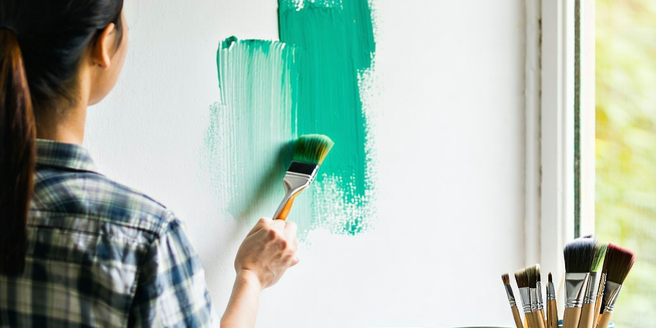
Maximize Savings with DIY Projects
Taking on do-it-yourself (DIY) tasks can significantly reduce home improvement costs. By learning basic skills like painting, tiling, or simple carpentry, you can avoid the labor expenses typically associated with home renovations. Start small with projects that require minimal tools. For instance, installing shelves or updating cabinet hardware are accessible tasks that can enhance your space. Online tutorials and courses can offer guidance and troubleshooting tips, making the learning curve manageable. Besides saving money, DIY projects also provide a sense of accomplishment and the opportunity to personalize your home. It’s essential to plan and research thoroughly to ensure successful outcomes. Investing in quality tools gradually can also be beneficial as they will serve you in multiple projects, further contributing to cost savings and enhancing your DIY capabilities.
Repurposing Materials for Unique Decor
Repurposing existing materials is a creative way to refresh your home decor without breaking the bank. Old furniture can be given new life with some paint or reupholstery. For instance, a dated coffee table might be transformed with a coat of chalk paint or new hardware for a more contemporary look. Wooden pallets and crates are versatile materials that can be converted into rustic shelves or garden planters. You can often acquire these for free or at low cost. Additionally, salvaged items from yards or second-hand stores, like windows or doors, can be creatively reinvented into statement pieces such as mirrors or tables. This approach not only saves money but also reduces waste and adds character to your home, emphasizing a sustainable, resourceful lifestyle.
Affordable Paint Solutions for a Fresh Look
Repainting can drastically improve the ambiance of a space without major expenses. Opt for affordable yet quality paints to ensure longevity and a smooth finish. Consider painting an accent wall for impact while minimizing the amount of paint needed. Also, explore paint stores’ mis-tints sections, where you might find drastically discounted paints in desirable colors. Painting techniques like ombré walls or geometric patterns are innovative ways to add depth and interest. Additionally, refreshing baseboards and trim can complement newly painted walls and enhance the room’s overall aesthetics. Proper preparation, such as cleaning walls and using painters’ tape, leads to better results, helping you achieve a professional look inexpensively. Weigh the options of matte, satin, or glossy finishes depending on the room’s light and usage to get optimal outcomes.
Energy-Efficient Upgrades on a Budget
Energy-efficient home improvements can lead to substantial long-term savings. Start with basic steps like sealing gaps in windows and doors with weatherstripping to reduce heat loss. Another inexpensive method is upgrading to LED bulbs, which consume less power and last longer than traditional bulbs. Installing a programmable thermostat is another cost-effective upgrade; it optimizes heating and cooling schedules to reduce energy use during off-peak times. These small changes can significantly decrease utility bills over time. Additionally, window film or shades can regulate indoor temperatures by minimizing heat gain in summer and loss in winter. Look out for government rebates or incentives that may be available for switching to energy-efficient systems. This approach not only cuts costs but also reduces the environmental footprint of your home.
Transform Small Spaces with Low-Cost Hacks
Small spaces can be efficiently transformed with thoughtful design and budget-friendly hacks. Begin by decluttering to highlight the space’s natural dimensions. Multi-functional furniture, such as a sofa bed or a dining table that doubles as a desk, adds versatility without overcrowding. Utilizing vertical space is key; install shelves or hang hooks to maximize storage. Mirrors can create an illusion of depth, making the room feel larger and brighter. Consider adding pops of color through cushions or artwork to inject personality without overwhelming the room. Rugs can define areas and add warmth. Additionally, DIY projects like painting one wall or using peel-and-stick wallpapers can quickly freshen up the space. These affordable strategies can be implemented gradually, allowing you to transform your small space efficiently without the burden of high costs.
